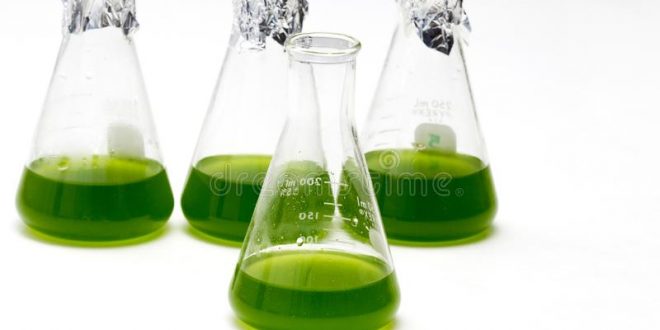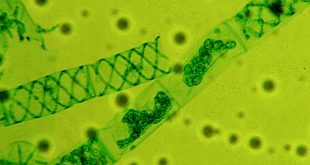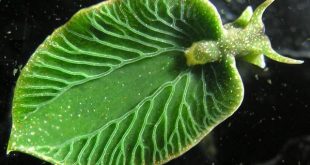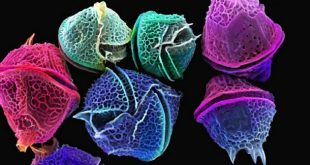Batch culture: A close system culture of algae in which there will be no supply or withdrawal of culture medium and biomass into or out of the culture vessel. In this type of culture the amount of medium and inoculum are known and specific.
a. Lag phase
It is the phase where the inoculum acclimatizes to the new environment. It is very crucial phase because in this phase, it is determined whether the organism is going to be metabolically active or inactive. There are physical and chemical factors which regulate this phase.
- The lag in growth is attributed to the physiological adaptation of the cell metabolism to growth, such as the increase of the levels of enzymes and metabolites involved in cell division and carbon fixation.
- Also called induction phase.
b. Acceleration phase
It is the shift up phase. Here cell divides and DNA replication occurs so cell number or biomass starts to increase. Synthesis of growth parameter starts.
RNA – Enzyme – DNA – Cell division – Cell increase.

c. Log phase or exponential phase
All the requirements are present for further division of cell. Balanced growth that is all the growth parameters uniformly increase. Organisms double in number after regular intervals.
During this period the growth rate remains constant and the biomass concentration changes according to the formula:
Here,
- μ = Growth rate
- t1 = Initial time
- t2 = Final time
- x1 = Biomass after t1
- x2 = Biomass after t2
Thus, growth rate at a specific time interval is
The mean doubling time (td) or generation time (g) can thus be determined as follows:
During this phase of growth the concentration ratio of the different biochemical components stays constant as shown in Figure. This pattern of growth is termed “balanced growth”. It may also be referred to as exponential growth.

d. Deceleration phase
DNA synthesis reduces resulting the reduction of cell number. It is the shift down phase. Here synthesis of growth parameter stops.
No mRNA – No protein – No DNA – Cell division stops – Cell number doesn’t increase
- It is opposite to acceleration phase.
e. Stationary phase
Number of dead cells is equal to the increase of the number of cell. Here, R/P = 1 i.e Rate of respiration and that of photosynthesis is equal.
- Biomass remains constant.
f. Decline phase
Cell death and lysis occur. The number of dead cells is higher than the number of cells produced by cell division. Here, R/P is greater than 1.
Source:
-
- Textbook of Algae by O P Sharma
Best safe and secure cloud storage with password protection
Get Envato Elements, Prime Video, Hotstar and Netflix For Free
 Plantlet The Blogging Platform of Department of Botany, University of Dhaka
Plantlet The Blogging Platform of Department of Botany, University of Dhaka





